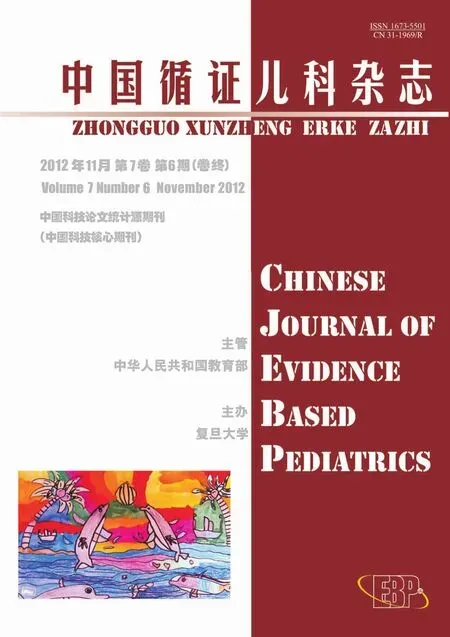对中国以人巨细胞病毒感染小鼠模型进行相关研究的质疑和剖析
舒赛男 刘兴楼 Ming Zhang 董永绥
人巨细胞病毒(HCMV)也称疱疹病毒5型,属疱疹病毒β亚科,为线状双链DNA病毒。HCMV感染是人类最常见的感染性疾病,几乎任何年龄的个体均可患病。在发达国家和发展中国家人群的感染率为40%~100%。中国是HCMV感染的高发区,上海人群CMV IgG阳性率1~3岁组为60.37%,>20岁组为97.03%[1]。HCMV感染呈慢性终身性感染。在免疫正常人群,HCMV感染主要表现为病毒潜伏(latency),伴不时有无症状的病毒复活(reactivation);HCMV又是机会感染原,在免疫低下(胎儿、婴幼儿)或免疫缺陷人群(艾滋病及器官移植患者等)可产生疾病,如先天感染可致小头畸形、智力障碍和神经性耳聋等多种损害;婴儿感染易累及肝脏;器官移植及艾滋病患者则可导致移植失败、HCMV肝炎、肺炎、脑炎或全身播散性感染,甚至死亡[2]。近年来研究又发现,HCMV感染还可能与动脉粥样硬化斑块形成[3]、冠心病球囊血管成形术后的再狭窄[4]以及多种恶性肿瘤(如胶质母细胞瘤、髓母细胞瘤、前列腺癌、乳腺癌、结肠癌和唾液腺肿瘤)的发生有关[5]。因此,对HCMV的研究一直是各国科学界的热点问题。
由于HCMV感染具有严格的物种特异性,因此,难以建立HCMV感染的动物模型从而在整体水平上研究HCMV致病机制及其防治。于是,各种动物CMV,包括小鼠CMV(MCMV)、大鼠CMV(RCMV)、豚鼠CMV(GPCMV)和猿猴CMV(RhCMV)感染各自宿主的研究被广泛应用。各种动物CMV感染模型因其特点不同而应用于不同的研究中,RCMV感染模型主要用于CMV相关血管疾病的研究[6];因GPCMV可以通过胎盘,GPCMV感染的豚鼠模型多用于CMV先天感染的研究[7, 8];RhCMV感染模型虽因代价高、动物获取困难很少采用,但却更接近人类HCMV感染,可用于疫苗研制、抗病毒药物研发、免疫及衰老等领域的研究[9];MCMV感染模型因动物的易得性、易操作性和相关检测试剂的丰富性,其应用最为广泛,Balb/c小鼠对MCMV天然易感,被最常采用,国外学者新近利用一些特殊处理小鼠研究HCMV感染取得进展,如联合免疫缺陷小鼠用于HCMV视网膜炎的研究[10]、转基因小鼠用于HCMV先天感染的研究[11]或人化小鼠用于HCMV潜伏和活化的研究[12],其中人化小鼠被认为是最具潜力的研究HCMV感染的模型工具,但仍存在人化小鼠操作困难以及不同实验室缺乏统一标准的问题。
目前国际上仍公认无法建立HCMV感染野生型动物的模型,也没有一种动物模型能完美模拟人类的HCMV感染[13, 14]。然而近年来,中国学者先后有13篇[15~28]文章报道建立了HCMV感染野生型小鼠模型(表1)。文章全部采用HCMV AD169株接种Balb/c或昆明小鼠,分别“成功”建立了HCMV感染小鼠脑组织、HCMV感染小鼠椎间盘组织、HCMV感染致小鼠间质性肺炎、HCMV先天性感染致小鼠肝脏损伤、HCMV先天性感染再激活致小鼠肠炎等模型。
本文在仔细阅读和分析上述13篇文章基础上,认为这些文章中的实验方法和结果对“HCMV感染可突破物种屏障”一说并未提供足够的理论和实验依据。
首先,欲证明某种病原体成功感染某种机体,应该达到微生物学证病律——柯赫法则(Koch's postulates)的要求[29]:①在模型动物中出现相同的微生物,且在健康动物体内不存在;②从模型动物分离出病原,并能在培养基中得到纯培养或者以全基因组序列分析证实为该病原;③用这种病原的纯培养接种健康而敏感的寄主,同样的疾病会重复发生;④从试验发病的宿主中能再次分离培养出该病原。
由于HCMV尤其是HCMV AD169株,在分子水平和MCMV有高度相似性[30],因此,所有HCMV感染小鼠的研究应该在造模前先排除MCMV的感染,如对实验小鼠,在研究前先进行MCMV IgM及IgG测定,以排除MCMV感染[31, 32]。因为MCMV很容易在小鼠中传播,据澳大利亚研究报道[33],自由放养家鼠MCMV感染率可高达100%,其中不同病毒株的混合感染最高达66.7%,平均混合感染率为34.2%,免疫正常的实验鼠也很易感染,而且同样可以感染多个不同毒株。HCMV AD169株和MCMV分子水平的相似性表现在它们有相同的基因组大小(230 kb)、相近的G+C含量(约59%)和多达78个相同的开放读码框(部分见表2)[30],因此对动物模型中HCMV分子水平的证实,即便发现某种CMV DNA、mRNA片段的阳性,很有可能是潜在MCMV感染引起的假阳性,应该进行HCMV AD169株全基因组测序证实,并排除MCMV感染。

表1 HCMV感染小鼠模型的文献概括

表2 HCMV(AD169株)与MCMV(Smith株)相同的开放读码框
注:所列为代表性部分,详细请见参考文献[30]
病毒的分离培养一直被作为病毒学检测的金标准,但是早在1972年就有文献报道,MCMV可以引起人双倍体细胞株(WI-38)出现典型的细胞病变(CPE),但受感染的人双倍体细胞并不产生具有感染性的子代病毒,为流产性感染[34]。因此,不能单纯依靠观察到CPE就证实HCMV分离成功,CPE有可能是小鼠体内原有的MCMV感染所致,亦有可能遇到MCMV变异使之确实可以在人细胞中复制[35]。目前已有试验证实MCMV不感染人细胞,并不是病毒不能进入细胞,而是病毒进入细胞后启动了细胞凋亡,导致MCMV无法在人细胞内进行完整病毒的DNA复制和基因表达[36]。此外,针对HCMV的血清学检测同样存在与MCMV抗体交叉反应的可能,其中临床使用最广泛的HCMV pp65抗原的片段就被证实可以诱导小鼠产生自身抗体,出现抗原抗体反应阳性[37]。
其次,证明HCMV感染野生型小鼠造模成功应该采用可靠的检测方法和证实手段。表1所列文章采用了不同的检测方法,可将其分为5类:①观察组织病理学变化;②病毒分离,主要是观察人成纤维细胞出现CPE;③HCMV某个基因片段扩增阳性;④血清学检测HCMV抗原抗体;⑤电镜观察病毒颗粒等。文献[16]仅观察了组织病理学变化,没有进行病原的相关检测,证据不足;文献[17~20,22~24,27,28]进行了“病毒分离”,但文献中的“病毒分离”均限于观察到特征性的CPE,CPE的产生有可能由组织中游离的母代HCMV所致,也有可能是潜在的MCMV感染所致,应该采用可靠的方法证实病毒培养与分离中确实产生了HCMV AD169的感染性病毒颗粒;文献[17~24,26~28]进行了HCMV基因片段的检测,大部分为PCR或原位杂交检测DNA,若除外MCMV潜在感染所致的假阳性,DNA检测阳性也只能说明局部有病毒核酸片段,并不能代表造模成功;其中文献[23,24]检测了病毒mRNA(分别是HCMV UL83,片段长度766 bp,HCMV UL54,片段长度142 bp),同样不能排除MCMV或母代HCMV的可能,可靠的证据应该是从小鼠模型的样本中得到病毒全基因组测序与己知的HCMV AD169(GenBank accession number X17403,AC146999)比对相符才行[38, 39];文献[21~25]进行了抗原或抗体的检测,但均没有排除与MCMV抗体交叉反应的可能;文献[20,22]用电镜观察到了病毒颗粒,只能说明局部有病毒,同样存在MCMV或母代HCMV可能,并不能表示HCMV突破物种屏障感染小鼠成功。
综上所述,证实HCMV突破物种屏障成功感染小鼠应该是从小鼠模型的样本中得到HCMV纯培养成功或者HCMV的全基因组序列,并且培养所得的HCMV可以复制出同样的模型,2次模型中还能分离培养出HCMV。
HCMV确实感染野生型动物成功?该感染确实为活动性感染?该动物模型的疾病表现确实由HCMV感染引致?问题答案需要谨慎对待。不能仅仅依靠一句“成功建立”来敷衍解释,HCMV突破物种屏障感染野生型动物一说还需要更缜密细致的设计和更全面深入的研究来证实。
[1]Fang FQ, Fan QS, Yang ZJ, et al. Incidence of cytomega-lovirus infection in Shanghai, China. Clin Vaccine Immunol, 2009, 16(11): 1700-1703
[2]Demmler GJ. Cytomegalovirus. In: Feigin RD and Cherry JD (eds). Textbook of Pediatric Infectious Disease. 6th edition, Philadelphia: W.B. Saunders Co. 2009, 2022-2043
[3]Corrado E, Novo S. Role of inflammation and infection in vascular disease. Acta Chir Belg, 2005, 105(6): 567-579
[4]Carlsson J, Miketic S, Brom J, et al. Prior cytomegalovirus, Chlamydia pneumoniae or Helicobacter pylori infection and the risk of restenosis after percutaneous transluminal coronary angioplasty. Int J Cardiol, 2000, 73(2): 165-171
[5]Johnsen JI, Baryawno N, Soderberg-Nauclér C. Is human cytomegalovirus a target in cancer therapy? Oncotarget, 2011, 2(12): 1329-1338
[6]Streblow DN, Dumortier J, Moses AV, et al. Mechanisms of cytomegalovirus-accelerated vascular disease: induction of paracrine factors that promote angiogenesis and wound healing. In: Shenk TE and Stinski MF(eds). Human Cytomegalovirus. Berlin Heideberg: Springer-Verlog. 2008, 397-415
[7]Mess A. The guinea pig placenta: model of placental growth dynamics. Placenta, 2007, 28(8-9):812-815
[8]Bravo FJ, Cardin RD, Bernstein DI. Effect of maternal treatment with cyclic HPMPC in the guinea pig model of congenital cytomegalovirus infection. J Infect Dis, 2006, 193(4):591-597
[9]Powers C, Früh K. Rhesus CMV: an emerging animal model for human CMV. Med Microbiol Immunol, 2008, 197(2):109-115
[10]Bravo FJ, Cardin RD, Bernstein DI. A model of human cytomegalovirus infection in severe combined immunodeficient mice. Antiviral Res, 2007, 76(2):104-110
[11]Fritschy JM, Brandner S, Aguzzi A, et al. Brain cell type specificity and gliosis-induced activation of the human cytome-galovirus immediate-early promoter in transgenic mice. J Neurosci, 1996, 16(7):2275-2282
[12]Smith MS, Goldman DC, Bailey AS, et al. Granulocyte-colony stimulating factor reactivates human cytomegalovirus in a latently infected humanized mouse model. Cell Host Microbe, 2010, 8(3):284-291
[13]McGregor A, Choi KY. Cytomegalovirus antivirals and development of improved animal models. Expert Opin Drug Metab Toxicol, 2011, 7(10): 1245-1265
[14]McGregor A. Current and new cytomegalovirus antivirals and novel animal model strategies. Inflamm Allergy Drug Targets, 2010, 9(4):286-299
[15]Wu JX(吴建贤), Wang GH, Hong YF, et al. Research progress of animal models of human cytomegalovirus infection. Anhui Medical Journal(安徽医学), 2009, 30(4): 484-487
[16]Li TX(李天宪), Zhao L, Feng F, et al. An experimental animal model study of HCMV. Acta Microbiololgica Sinica(微生物学报), 1996, 36(4):292-294
[17]Tang ZH(汤正好), Wang ML, Yuan ZY, et al. A mouse model of congenital human cytomegalovirus infection that induces liver damage in fetus. Journal of Tropical Diseases and Parasitology (热带病与寄生虫学), 1999, 28(4):193-197
[18]Chen GH(陈贵海), Wang ML, Yuan ZY. Changes of calmodulin mRNA in the cerebral cortex of fetal mice infected congenitally by human cytomegalovirus. Chin J Neurol(中华神经科杂志), 2000, 33(4):216-219
[19]Tang ZH(汤正好), Wang ML, Yuan ZY, et al. A mouse model of congenital human cytomegalovirus infection that induces liver damage in fetus. Chin J Infect Dis(中华传染病杂志), 2001, 19(6):338-341
[20]Tang JL, Wang ML, Qiu JJ, et al. Building a mouse model hallmarking the congenital human cytomegalovirus infection in central nervous system. Arch Virol, 2002, 147(6):1189-1195
[21]Xie N(谢妮), Chen LY, Dai G, et al. Experimental study of mouse infected with human cytomegalovirus AD169 strain. Bull Hunan Med Univ(湖南医科大学学报), 2003, 28(3):243-246
[22]Hou S(侯舒), Wang YT, Xu SY. The establishment of murin model of human clinical cytomegalovirus interstitial pneumonia. Chinese Pharmacological Bulletin(中国药理学通报), 2005, 21(5):632-635
[23]Wu Q(吴琼), Wang ML, Huang W, et al. Enteritis induced by reactivation of congenital latent infection of human cytome-galovirus in mice. World Chinese Journal of Digestology (世界华人消化杂志), 2008, 16(28):3157-3161
[24]Wu JX(吴建贤), Wang GH, Wang B, et al. A preliminary study on degeneration of Balb/c mice's intervertebral disc tissues infected with hCMV ADl69 strain. Anhui Medical and Pharmaceutical Journal(安徽医药), 2009, 13(8):872-875
[25]Xie N(谢妮), Cai YS, Wu JB, et al. Proteomic study of the brain tissues of mice with human cytomegalovirus infection. J South Med Univ(南方医科大学学报), 2010, 30(2):341-344
[26]Zheng Y(郑意), Gu SQ, Li JA, et al. A mouse model of congenital human cytomegalovirus infection that induces liver damage in new born mouse. Journal of Jiangsu University (Medicine Edition)(江苏大学学报医学版), 2011, 21(2): 135-138
[27]Li JA(李继安), Gu SQ, Ye LY, et al. Influence of low molecular weight heparin intervention in pregnancy on congenital cytomegalovirus infection in liver cells of newborn mice. J Appl Clin Pediatr(实用儿科临床杂志), 2011, 26(10): 792-794
[28]Zhang L(张俐), Peng L, Li DL, et al. Development of a mouse model of congenital human cytomegalovirus hepatitis. Chin J Lab Diagn(中国实验诊断学), 2011, 15(9): 1447-1449
[29]Inglis TJ. Principia aetiologica: taking causality beyond Koch's postulates. J Med Microbiol, 2007, 56(Pt 11): 1419-1422
[30]Rawlinson WD, Farrell HE, Barrell BG. Analysis of the complete DNA sequence of murine cytomegalovirus.J Virol, 1996, 70(12): 8833-8849
[31]Juanjuan C, Yan F, Li C, et al. Murine model for congenital CMV infection and hearing impairment. Virol J, 2011, 8:70
[32]Chen J, Feng Y, Chen L, et al. Long-term impact of intrau-terine MCMV infection on development of offspring nervous system. Huazhong Univ Sci Technolog Med Sci, 2011, 31(3):371-375
[33]Gorman S, Harvey NL, Moro D, et al. Mixed infection with multiple strains of murine cytomegalovirus occurs following simultaneous or sequential infection of immunocompetent mice. J Gen Virol, 2006, 87(Pt 5): 1123-1132
[34]Kim KS, Carp RI. Abortive infection of human diploid cells by murine cytomegalovirus. Infect Immun, 1972, 6(5): 793-797
[35]Schumacher U, Handke W, Jurak I, et al. Mutations in the M112/M113-coding region facilitate murine cytomegalovirus replication in human cells. J Virol, 2010, 84(16):7994-8006
[36]Jurak I, Brune W. Induction of apoptosis limits cytomegalovirus cross-species infection. EMBO J, 2006, 25(11):2634-2642
[37]Hsieh AH, Jhou YJ, Liang CT, et al. Fragment of tegument protein pp65 of human cytomegalovirus induces autoantibodies in BALB/c mice. Arthritis Res Ther, 2011, 13(5): R162
[38]Mokili JL, Rohwer F, Dutilh BE. Metagenomics and future perspectives in virus discovery. Curr Opin Virol, 2012, 2(1): 63-77
[39]Jung GS, Kim YY, Kim JI, et al. Full genome sequencing and analysis of human cytomegalovirus strain JHC isolated from a Korean patient. Virus Res, 2011, 156(1-2): 113-120

